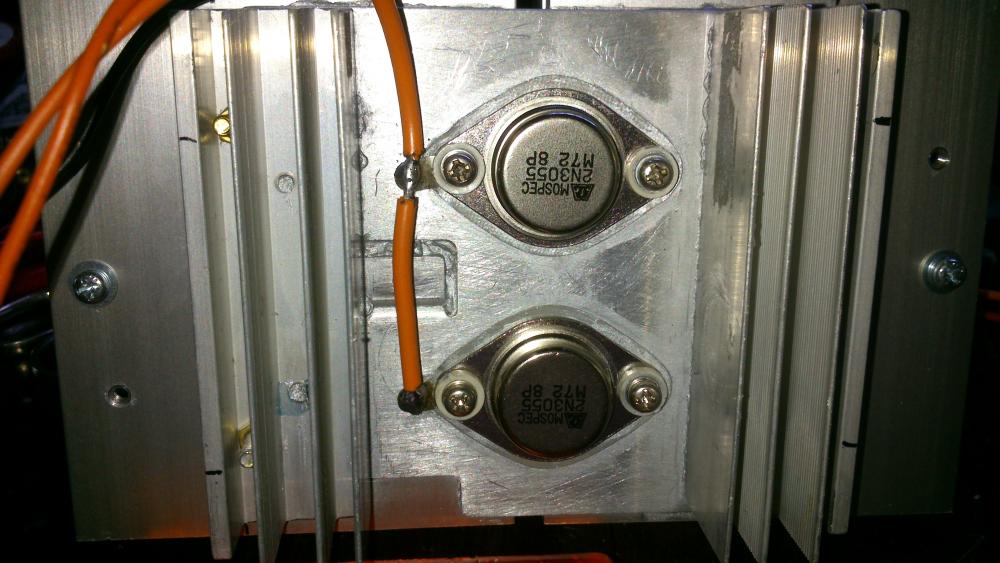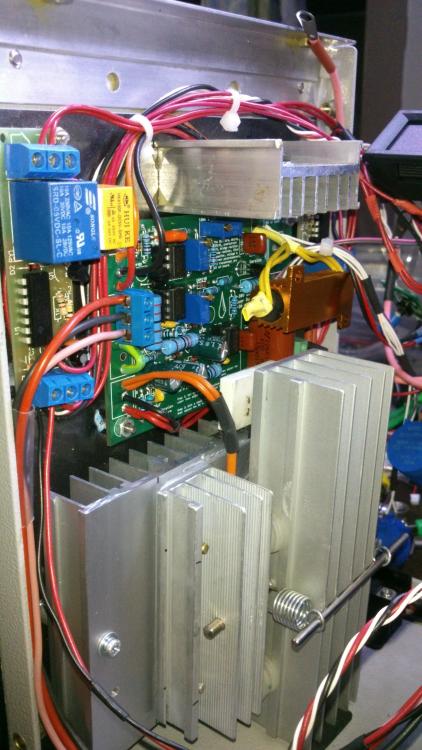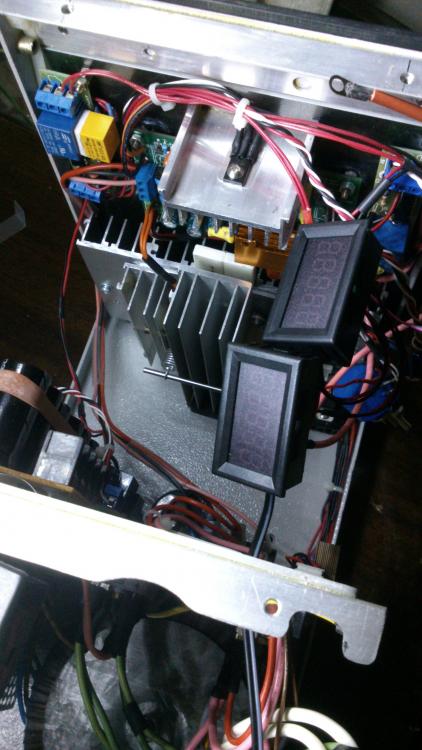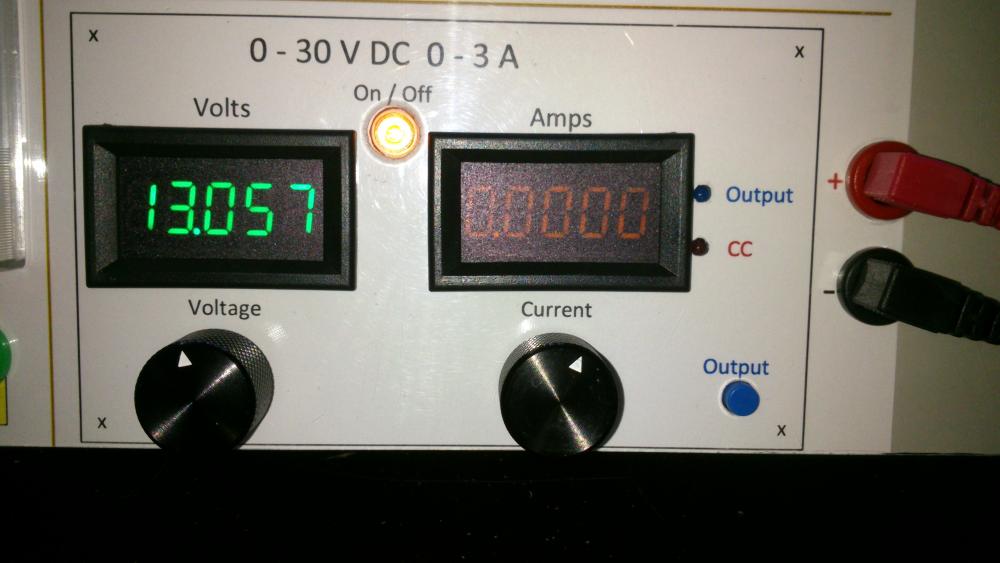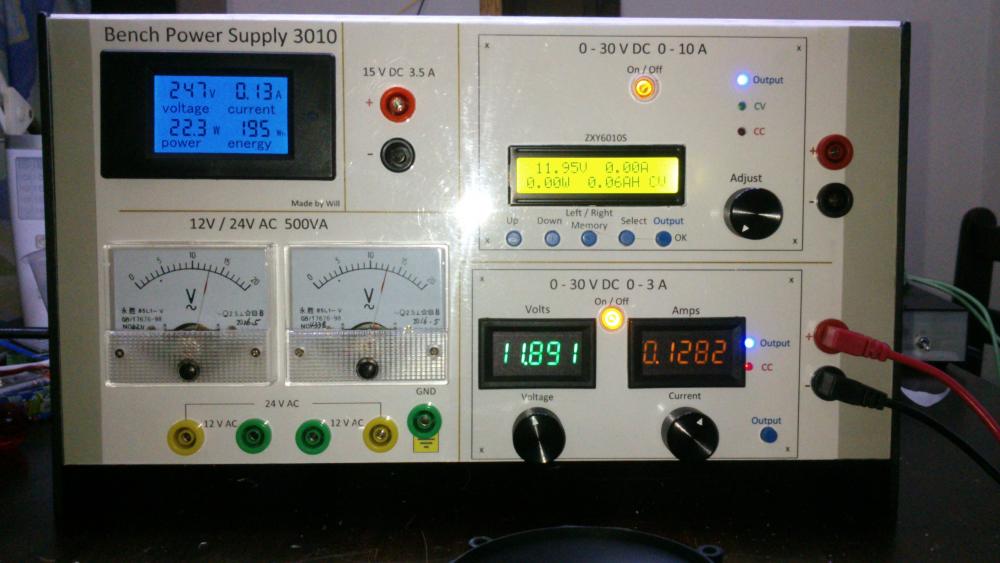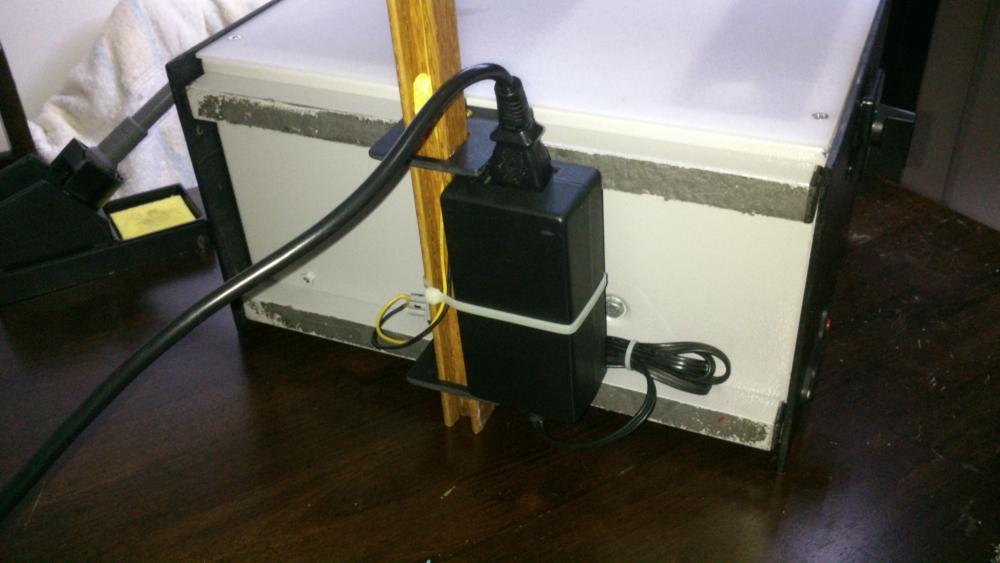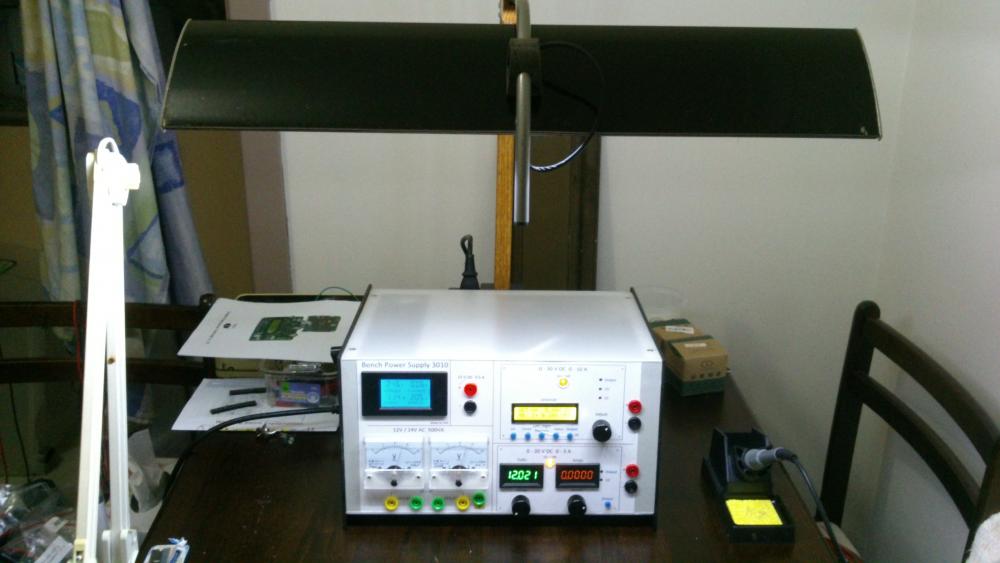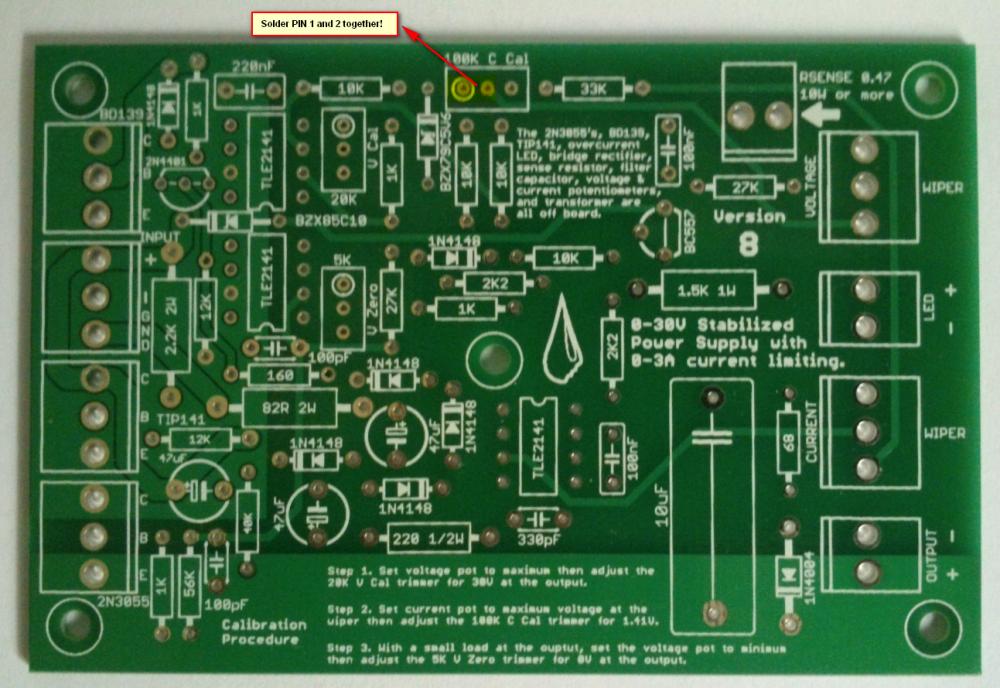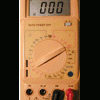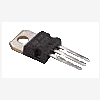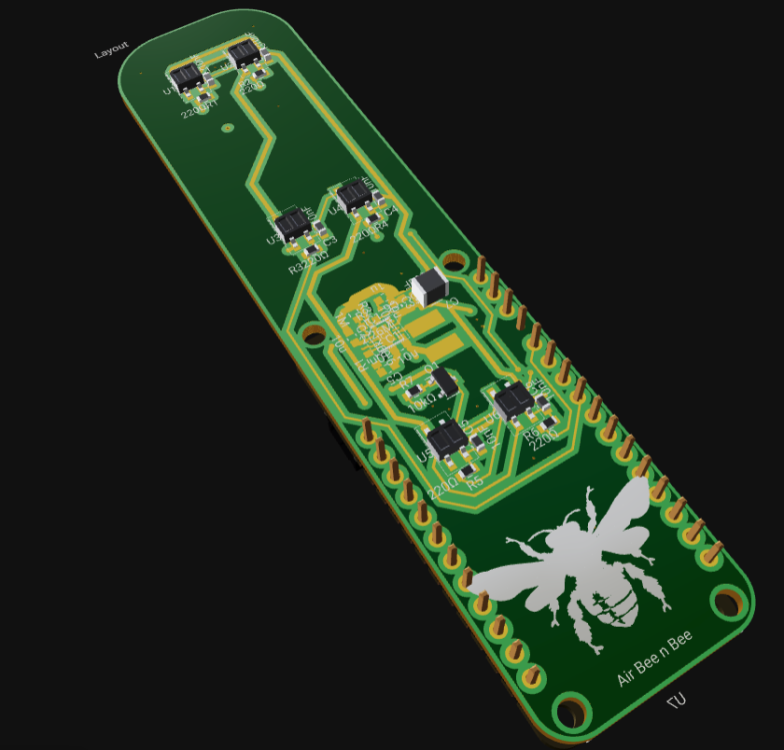Leaderboard
Popular Content
Showing content with the highest reputation since 07/27/2015 in Posts
-
0-30V 0-3A Latest Data
AsSa and 3 others reacted to repairman2be for a topic
Hi all, Finally after some months have gone by, my build of the Power Supply is done. I have used liquibyte schematic Rev. 8 and had made the cirquit board according to the Gerber.zip file he posted here: 0-30V Stabilized Power Supply Page 88 posted October 6, 2014 "http://electronics-lab.com/community/index.php?/topic/29563-0-30v-stabilized-power-supply/&page=88" I left out D10 and R15 as per his description. I have plenty of boards leftover if someone has a need for it. There was only one mistake liquibyte made which have outlined in one of the pictures uploaded here. I was fortunate enough to get a big case with a Toroidal transformer from the scrapyard. Also many parts are recycled from various sources. Regards, William4 points -
Finally, my post with the Eagle .sch and .brd, full gerbers, and parts list for Digikey in a zip file. I'm also including many of the pics I took as I was building that were posted both before and after this post. I'm still not completely done and may add more pics later. One thing I have changed is the third transformer for the auxiliary circuitry for the temperature sensor and fans and the displays (I wanted a better transformer than the Radio Shack special I had on hand). Archive attached. 30V.zip3 points
-
Solar-powered Bee Hotel w/ Particle Argon (ongoing project)
Jolin He and one other reacted to JamesMVictoria for a topic
Nice one, I like it.2 points -

How to easily turn on/off all debug message on Arduino IDE
SharonWatkins and one other reacted to MrNams for a topic
But even if we disable debug, it will call print method and do not print anything. I mean we should make it something like #ifdef DEBUG Serial.print("\n debug controlled print"); #endif Here when we disable macro, its like code is not written for compiler, code will be removed in macro processing itself.2 points -

H Bridge PWM DC Motor Driver + PCB
senaka ranathunga and one other reacted to sam.moshiri for a topic
An H-Bridge (Full-Bridge) driver is quite popular in driving loads such as brushed DC motors and it is widely used in robotics and industry. The main advantages of using an H-Bridge driver are: high efficiency, rotation direction change, and braking the motor. In this article/video, I have introduced a complete H-Bridge DC motor driver using four IR3205 power MOSFETs and two IR2104 MOSFET drivers. Theoretically, the above-mentioned MOSFET can handle currents up to 80A, however, in practice we can expect to get currents up to 40A if the MOSFET temperature is kept as low as possible, using a big heatsink or even a fan. References Article: https://www.pcbway.com/blog/technology/Powerful_H_Bridge_DC_Motor_Driver.html [1]: IRF3205 Datasheet: http://www.irf.com/product-info/datasheets/data/irf3205.pdf [2]: IR2104 Datasheet: https://www.infineon.com/dgdl/Infineon-IR2104-DS-v01_00-EN.pdf?fileId=5546d462533600a4015355c7c1c31671 [3]: 1N5819 Datasheet: https://www.diodes.com/assets/Datasheets/ds23001.pdf [4]: IR2104 Schematic Symbol, PCB Footprint, 3D Model: https://componentsearchengine.com/part-view/IR2104PBF/Infineon [5]: IRF3205 Schematic Symbol, PCB Footprint, 3D Model: https://componentsearchengine.com/part-view/IRF3205ZPBF/Infineon [6]: CAD Plugins: https://www.samacsys.com/library-loader-help2 points -

Non Contact Hand Sanitizer Dispenser, Easy, Cheap, No Arduino!
sam.moshiri and one other reacted to admin for a topic
Thanks for sharing your project with us. Could you give more details on the control board?2 points -
The original circuit should work fine up to 15V at 1A if you replace the old opamps with the newer higher voltage ones. You probably should recalculate the resistors that set the maximum voltage and current outputs. If the Chinese kit uses the transistor that shorts the opamp output when the power is turned off then the resistors that feed the transistor need to be recalculated for the reduced voltage. I have used perforated stripboard for many projects including very complicated ones. The copper strips are cut to length with a drill-bit and become almost half the wiring of a pcb. The parts and a few short jumper wires become the remainder of the wiring. Only one wire is in each hole so changing a part is easy like on a pcb.2 points
-
Hi, as promised I made an English translation of my working. Maybe there is few mistakes and I am sorry for that ! Good reading. ExplicationEN.pdf2 points
-
I use copper wire, not rice wire. They put rice in everything they make, especially batteries.2 points
-
0-30 Vdc Stabilized Power Supply
electron234 and one other reacted to elctro123 for a topic
So Finally which version of schematic is correct / flawless to build the PSU ?2 points -
February 23 above on this page has the latest schematic of the revised 3A lab power supply.2 points
-
Does anyone has LM3914 pspice library? i desperately need it..pleeeeease!2 points
-

Low power solenoid?
AmelieScott and one other gave a reaction for a topic
I want to apply force for an extended amount of time (10 secs to a couple minutes) using a solenoid actuator. Unfortunately, it seems that solenoids use a lot of power when they are active. Is there a solenoid type that will only use power when switching between active and not active? There's probably a way I can do this with an external mechanism, but I was wondering if there may be commercial solenoids that have this built-in. Thanks, Jessica2 points -
Illegal content (ebook/magazines/software) will be deleted without any notice. Thanks2 points
-
Overload Protector A16 ???
joeydennis11 and one other reacted to tjolle62 for a topic
In a few circuit diagrams i have they refer to a what seems to me is a transistor with B C E as a overload protector and with number A16 and i have looked for a few hours on the net and i can't find anything on this little fellow, Anyone knows what I'm looking for and wanna share that info Please .... Come on !! 48 visits !! some one must know what it is !!! PNP is it also...........2 points -
Overload Protector A16 ???
joeydennis11 and one other reacted to tjolle62 for a topic
At last i got a theori from a totally different place and he wasn't shure either but he had a weak memory that it could be 1A16 and a PNP transistor but after several deep searches on the I-net it didn't make any kind of senses whatsoever ???2 points -

Car battery to parallel port
tracythomas50 and one other reacted to MP for a topic
When you use your resistive divider to drop the voltage down to 5 volts, you just need to select values of resistors to limit the current. This is basic ohm's law. V/R. Was this your question or did I misunderstand? I am not sure how you intend to monitor status by using one 5 volt pin. As an interface to the parallel port, you could use an LM3914. This would give you the resolution you need. There are also many other ways to proceed. You need to convert from analog to digital to read anything useful from the parallel port. MP2 points -

Car battery to parallel port
tracythomas50 and one other reacted to Omni for a topic
Hi TJBraza, http://www.analog.com/UploadedFiles/Data_Sheets/ADT7485A.pdf Although, it will probably require a small program written in C or Visual basic to convert the string MSB & LSB into a more easier read etc... Take a moment and review the data sheet, the IC has a lot of potential.2 points -
SL100 & SK100 transistor
AmelieScott and one other reacted to alanng96 for a topic
I can't find SL100 & SK100 transistor :'( Which transistors can replace these? Thank you for your help~ ;)2 points -
Calm down people. It is not Mixos's fault, if it is against the law he has to remove the content. This site is very good for asking electronic related questions, I have yet to find a better one.2 points
-

Solar-powered Bee Hotel w/ Particle Argon (ongoing project)
Jolin He reacted to Pete Ballotta for a topic
One of my teammates is working on an open Hardware Project that I thought to share. The product they’re developing is a bee hotel for native bees (not honeybees)! At the SF Climate hackathon, they integrated the Particle Argon onto a PCB with solar panels, MPPC, and a PWM PIR sensor for the bees. Here’s the link to the schematics, layout and 3D. I'll add a 3D screenshot at the bottom of the post. "A little bit of background, a native bee hotel houses sedentary bees which lay their eggs in tube structures, like hollow plant stems. We want to use PIR sensors along the tubes to get bee traffic data and build a country-wide bee traffic map. Solar Cells I’ve bumped into the IXYS KXOB25 series before and loved them for their reflowability. I wanted to connect them in parallel so the only constraint was that their output voltage is less than 5V, which is the maximum input voltage of the energy harvesting IC. Energy Harvesting I chose the LTC3105EDD 15 because I’ve seen it used to maximize solar cell power output in some nanosatellite projects I’ve browsed in the past. Although it doesn’t have an actual MPPT algorithm, it has a very attractive 250mV startup voltage which can potentially increase the times of day our device will provide power (dawn, dusk, cloud cover). All this needs real world testing which is coming next week. PIR Sensors These are paired infrared transmitters and receivers. As seen in the 3D view, we’re using 2 of them per bee tube to determine which direction the bees are going (in or out of the tube). Of course, this would need to be done in firmware. To save power (because these PIR diodes are super power hungry, we added a low side MOSFET that switches all three strings of PIR diodes (they are strung in series to get 1.1V drive from a 3.3V source). In theory, we can decrease the PWM duty cycle to as low as the PIR’s rise time and set the frequency to 1Hz which would save so much power. Future Steps Here are the unknowns that we’ll be researching. I already see some good answers in the forums, but please feel free to chime in! I’ve played with Edge Impulse in the past and we want to run a small tflite model on particle hardware that would determine what type of bee is in the hotel based on a short audio sample. We also want to send this data to a central server hosted by particle; in your experience how many weeks/months would it take to setup particle cloud to get up to 100 provisioned devices sending about 50 bytes of data to a central server? It would be awesome if we can get that done quickly."1 point -

BGA rework Process?
Moises Campos reacted to HarryA for a topic
Is Rolling Meadows, IL 60008 near you? see: https://www.solder.net/training-courses/bga-rework-training/ See for low key diy rework: https://www.instructables.com/BGA-rework/1 point -

555 timer
JaneCai reacted to Holy Hathaway for a topic
The 555 timer is a medium-sized integrated circuit developed by Signetics in 1972 to replace mechanical timers. It is named after the input is designed with three 5kΩ resistors. This circuit later became popular in the world. At present, there are four popular products: two BJTs: 555, 556 (with two 555); two CMOS: 7555, 7556 (containing two 7555). The 555 Timer is a mid-scale integrated device that combines analog and digital functions. It is called 555, which is usually fabricated by bipolar (TTL) process. It is called 7555 by complementary metal oxide (CMOS) process. In addition to single timer, there is corresponding double timer 556/7556. Its power supply voltage range is wide and can operate from 4.5V to 16V, the 7555 can operate from 3 to 18V, and the output drive current is approximately 200mA, so its output is compatible with TTL, CMOS or analog circuit levels. The 555 chip is an extremely versatile chip with up to hundreds of different applications including time-base timing or switching and voltage controlled oscillators and regulators. For those who have been exposed to digital or analog circuits, the 555 chip is definitely a classic. With its low cost and reliable performance, it is widely used in various electrical appliances, including instrumentation, household appliances, electric toys, and automatic control. Its various pin functions are as follows: Pin 1: external power supply negative terminal VSS or ground, under normal grounding. Pin 2: Low trigger terminal TL, this pin voltage is valid when it is less than 1/3 VCC. Pin 3: output OUT. Pin 4: directly clear the terminal RST. When this terminal is connected to a low level, the time base circuit does not work. At this time, regardless of the level of TL and TH, the time base circuit output is “0”, and the terminal should be connected to a high level during normal operation. Pin 5: CO is the control voltage terminal. If the pin is externally connected, the reference voltage of the two internal comparators can be changed. When the pin is not used, the pin should be grounded into a 0.01μF (103) ceramic capacitor to prevent high frequency interference. Pin 6: High trigger terminal TH, this pin is valid when the voltage is greater than 2/3 VCC. Pin 7: discharge end. This terminal is connected to the collector of the discharge tube T and serves as a discharge pin for the capacitor at the time of the timer. Pin 8: external power supply VCC, bipolar time base circuit VCC range is 4.5 -16V, CMOS type time base circuit VCC range is 3-18V, generally 5V.1 point -

Good book for beginners?
KaneD reacted to charlesmox1 for a topic
By the way, thanks for the books, Perhaps someone can advise something relevant today?1 point -

MOD-23 counter
Thatswhatshesaid reacted to HarryA for a topic
1 point -
The IPS6021 is readily available from China via Ebay. There is a supplier in the UK also: https://www.ebay.com/itm/IPS6021RPBF-Intelligent-Power-Switch-High-Side-Active-High-1Output-5-5V-TO-252-5/152755283380?hash=item2390eca5b4:g:U~MAAOSwqXxdNtVK1 point
-
BMS Charger for 18650
gztoppower reacted to arielrizuly for a topic
Need info for scheme bms 12v I -[===]+ -[===]+ -[===]+ l I -[===]+ -[===]+ -[===]+ l I -[===]+ -[===]+ -[===]+ l I. I I. I I. I 12v - 12v +1 point -
PCB manufactureres
rrp0727 reacted to jknightandkarr for a topic
I am looking for the cheapest pcb manufacturer that i can. I have a project for a friend and OSH Park going to charge almost $900 for all the pcb's i need. Granted theres 3 copies of each board, but i cant do any thing with the other sets. Any help isappreciated. Thanks Joe1 point -
Looking for someone to design a small board for me!
PhillipGok reacted to abid369 for a topic
I am a regular PCB designer. Check my designs specimens. If you have such inqyiry in future then e-mail me at [email protected] or call on +923214322695 Sample Designs.zip1 point -
I ordered a set of PCB on https://www.jlcpcb.com for a short run production build。 The quality of both the boards and the stencil are great. just cost me 2$.1 point
-
MS.NET on ARM devices
JerryAcert reacted to Dmitry for a topic
Some developers really need MS .NET Framework for some reason on their ARM devices (mainly on Raspberry Pi). So, basing on their requests, I have made a short tutorial on how to setup .NET on Raspberry Pi.1 point -
I enlarged the image off the Amazon.com but could not read it https://www.amazon.com/Black-Decker-LCS1620-Lithium-battery/dp/B01M6TQPY2/ref=sr_1_3/141-0275392-4037060?ie=UTF8&qid=1499813460&sr=8-3&keywords=Black+%26+Decker+LCS1620 ...but ebay.com has a readable image http://www.ebay.com/itm/Black-Decker-LCS1620-20v-20-Volt-Lithum-Ion-Battery-Charger-NEW-/272090041874?epid=1640405275&hash=item3f59d48e12:g:mf8AAOSwawpXr3eh 120v @60hz 300ma1 point
-
1 point
-
Power supply
gztoppower reacted to Soldertraining for a topic
A power supply is an electronic device which supplies electric energy to an electrical load. Can anyone tell me what is the minimum power required 1 ton AC.1 point -
1 point
-

A modern day 0 - 30V, 0 - 3A Linear Power Supply?
electron234 reacted to audioguru for a topic
The ebay kit that is a copy of the original faulty Greek power supply on this site is also sold by Banggood and Amazon. Banggood is selling it at a clearance price since they probably had many complaints. They have modified it a little and are selling it again as a kit with a 28V/2A rating and an LCD meter for it. The very nice looking 30V/10A power supply is extremely cheap. Its ad has no detailed spec's. It does not even say if the voltage and current are regulated. If something looks to be too good then it probably is not true.1 point -
You ask for a lot! Start with Ebay.com for transmitters and receivers: see: http://www.ebay.com/itm/Mini-88-108MHz-FM-Transmitter-Module-Wireless-Microphone-Dictagraph-Interceptor/141659602950?_trksid=p2047675.c100005.m1851&_trkparms=aid%3D222007%26algo%3DSIC.MBE%26ao%3D2%26asc%3D40832%26meid%3D5caec1e4bbe74e2fa065b6379434198a%26pid%3D100005%26rk%3D2%26rkt%3D6%26sd%3D1116497410721 point
-

12v lamp Dimmer lamp ideas?
Jordan&tiffany reacted to stuee for a topic
I have a 12v transformer for interior lights and a few lights for it, but want to make it a dimmer light. the working amps are 250mA. I would like to know how to wire up these three ways, so i can try each one and see if its any good and use the best.... Touch lamp. touch the metal to turn on dimmest. press again for brighter and again for brighter and again for off. Manual pot adjuster. and digital potentimeter. press up to turn up and make brighter and down for darker / off, and a reset button to turn instant off. Any help and sche... will be helpfull. Thanks in advance1 point -
Your main filter capacitor value is much too low for an output of 10A. use at least 20,000uF. The transformer voltage is too high for a maximum output voltage of only 20V and its current rating is much too low. The poor little BD139 driver transistor will smoke and die if you are unlucky to find those very old output transistors with low current gain. Q1 is completely wrong. Its maximum allowed reverse bias on its base-emitter is only 5V.1 point
-
Sensor alarm and transmitter
Jacquelyn Norris reacted to steve10101 for a topic
Hey guys, I'm trying to make a proximity alarm and having trouble finding info. I can find plenty of examples for projects for an alarm and transmitter where as soon as the transmitter is a certain distance away the alarm flashes. What I'm wanting is the opposite, as soon as the transmitter is within a certain distance the alarm flashes. I'm sure this is as simple but I'm completely new to electronics so have no idea if its as simple as reversing a few things etc??? I don't even know the correct name for this product?? Any help or direction on this subject would be greatly appreciated. Cheers1 point -

i am designing radio transmitter and reciever
ravikumarmangalampalli gave a reaction for a topic
parts i have : antenna wire,magnetic wire,toroid core, 23 mhz crysrtal oscillator,some transistors ,resistors,capacitors.... i want to design circuit to simply on and off the led by radio waves. could u sugest me simple circuit with to do this.. plzz.thank you in adavance1 point -
1 point
-
1 point
-

PWM using 555 timer
FranceRouze reacted to darrins for a topic
I read several datasheets and application notes on 555 timers, but I can't seem to find the information I'm looking for. Specifically, I'd like to use the 555 as a pulse width modulator by using the control voltage (pin 5). The datasheets indicate that in monostable mode, the output pulse width can be varied by modulating the voltage at pin 5 (V5). They also indicate that in astable mode, modulating V5 will modulate pulse position. What I'm wondering is this: What is the relationship between the control voltage, V5, and the values of the timing resistors and caps? There are standard formulas for timing based on these resistors and caps. How are those formulas affected by the introduction of V5? Thanks. Darrin1 point -
The same basic blocking oscillator circuit, normally used to drive a flyback transformer, can also drive a centre tapped or dual primary mains transformer. Here's an example of a capacitor charger using a mains transformer with a centre tapped primary. It should be able to drive a voltage multiplier circuit. C1 1 uF D2 1N4948 R2 +------||------+ T1 1.2kV PRV 1K 1W | | +-----|>|-----/\/\---+------o + | R1 4.7K, 1W | red ||( blk | +-----/\/\-----+------+ ||( | | yel )||( +_|_ C2 + o----------------------------------+ ||( --- 300 uF | red )||( - | 450 V | +--------------+ ||( | | Q1 | ||( blk | 6 to 12 | |/ C +--------------------+------o - VDC, 2A +----| 2N3055 Stancor P-6134 D1 _|_ |\ E 117 V Primary (blk-blk) 1N4007 /_\ | 6.3 VCT Secondary (red-yel-red) | | - o------------+------+ http://www.repairfaq.org/sam/samschem.htm#schssi1 point
-
This is my ZVS Flyback driver with pcb/desinged. It is very simple. ZVS Flyback Driver ;D <Y> ./'\.1 point
-
10,000V at 0.02A is 200W which is a lot of power for a little power supply.1 point
-
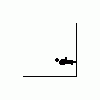
Electronic suplus stores
Jordan&tiffany reacted to gogo2520 for a topic
Hello RFamateur and welcome to the form. Here are a few. These have stuff some good lot outdated. http://www.goldmine-elec.com/default.htm http://unicornelectronics.com/prod.htm http://www.mpja.com/category/LEDs/LEDs.asp http://www.futurlec.com/index.shtml http://www.allelectronics.com/ http://www.danssmallpartsandkits.net/ http://www.alltronics.com/assortments.htm These are good suppliers http://www.mouser.com/index.cfm?handler=home http://www.futureelectronics.com/en/Pages/index.aspx http://www.web-tronics.com/ http://www.jameco.com/webapp/wcs/stores/servlet/StoreCatalogDisplay?storeId=10001&catalogId=10001&langId=-1 That should get you going. gogo1 point -
An excellent electronics manual
Jordan&tiffany reacted to CornToeNo for a topic
Here is the book in pdf for you all. You can press the free button and you have to wait about a minute then it gives you the links. Just pick one. http://rapidshare.com/files/3372603/Practical_Electronics_for_Inventors.pdf1 point -
Think of the commas as periods or the periods as commas. These are used differently in different continents. It means the same. MP1 point

